
Leading up to the 2023 to 2024 teacher training recruitment cycle, we decided to change the application process for candidates. Most of the changes we made were in Apply for teacher training (Apply). However, we also needed to reflect some of these changes in Manage teacher training applications (Manage).
Two of the biggest changes we made was to remove the functionality for:
-
applications to be rejected automatically 40 working days after a candidate had submitted
-
offers to be automatically declined if a candidate does not respond within 10 working days
The issue
Provider receives an application
When a provider receives an application, they have 40 working days to make a decision on it. If they do not take any action, the application is rejected automatically.
Our research has found that this is the most negative experience for candidates. It does not make them feel empowered to apply for teacher training again. Candidates value feedback from training providers so they can improve their next application.
Candidate receives an offer
When a candidate gets an offer, they have 10 working days to respond. This puts pressure on them because they like to wait for an outcome on all their applications before deciding - sometimes this can take more that 10 working days.
Policy design workshops
We held workshops with our policy design team to decide on solutions that will work for candidates and providers.
To stop applications being rejected automatically, we decided that applications would become ‘inactive’ after 30 working days. An inactive application would mean:
- candidates would be able to submit a further application if an existing one became inactive
- providers would still be able to respond to inactive applications, giving them more time to make decisions
To stop offers being automatically declined, we decided to remove the 10-day limit. This would mean candidates would have more time to make a decision based on their other applications.
After making this update, we needed to change some content in Manage to maintain consistency across the services.
What we changed
Viewing a list of applications
On the application list page, we show how many days a provider has left to make a decision on an application. The heading for ‘Received’ applications says, ‘Awaiting review’.
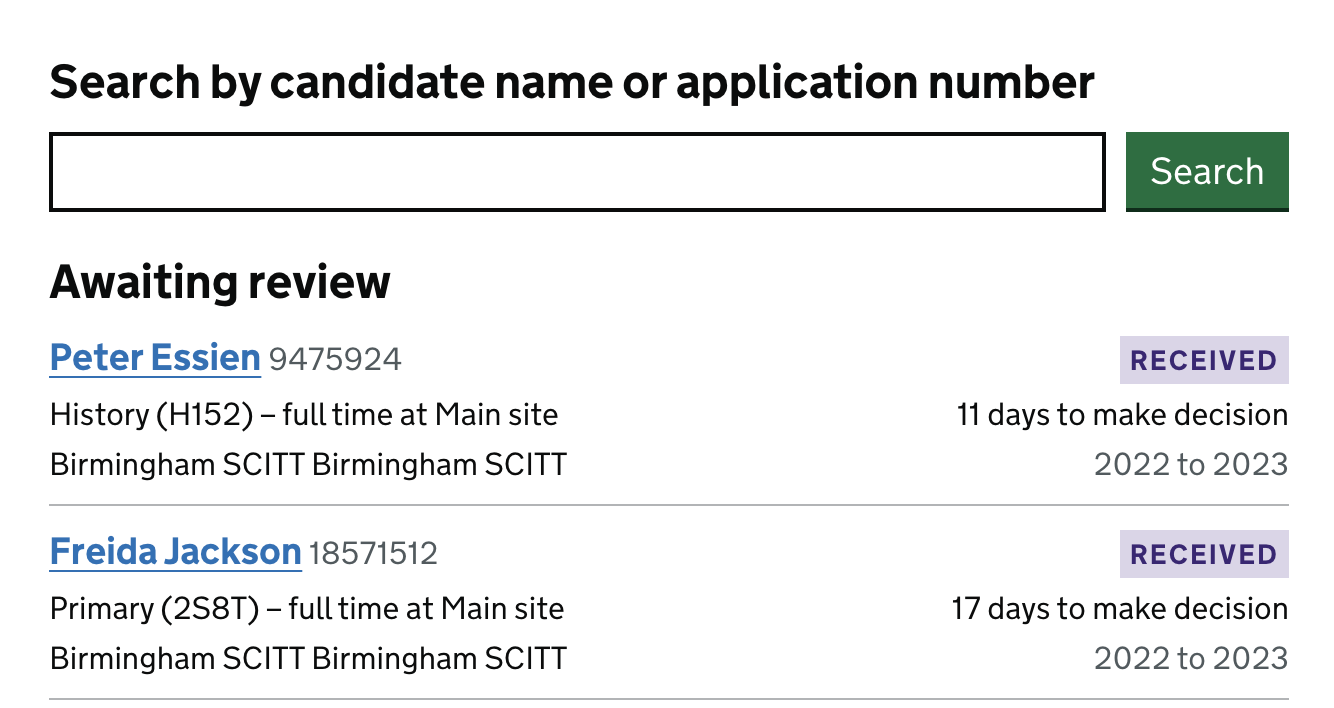
We replaced this with the date when the provider received the application. We made the heading a stronger call to action by saying ‘Received - make a decision’.

Once a provider makes an offer, we show how many days a candidate has left to make a decision before the offer is automatically declined.

We changed the content to show how long ago the provider made the offer.

The status for all applications where a decision had not been made is still, ‘Received’. If an application became inactive after 30 working days, we would keep the status as received because providers would still be able to make a decision on it after 30 working days.
We did not want to introduce a new status called ‘Inactive’ because this might be confusing for providers. We also thought that providers might ignore these even though they would still be able to make offers on them.
Making a decision on an application
When a provider looked at an application, we told them that they need to set up an interview or make a decision. Below this, the we explained that the application will be automatically rejected within a certain number of days.

We changed this to show how long ago that application was received and encourage the provider to make a decision within 30 working days.
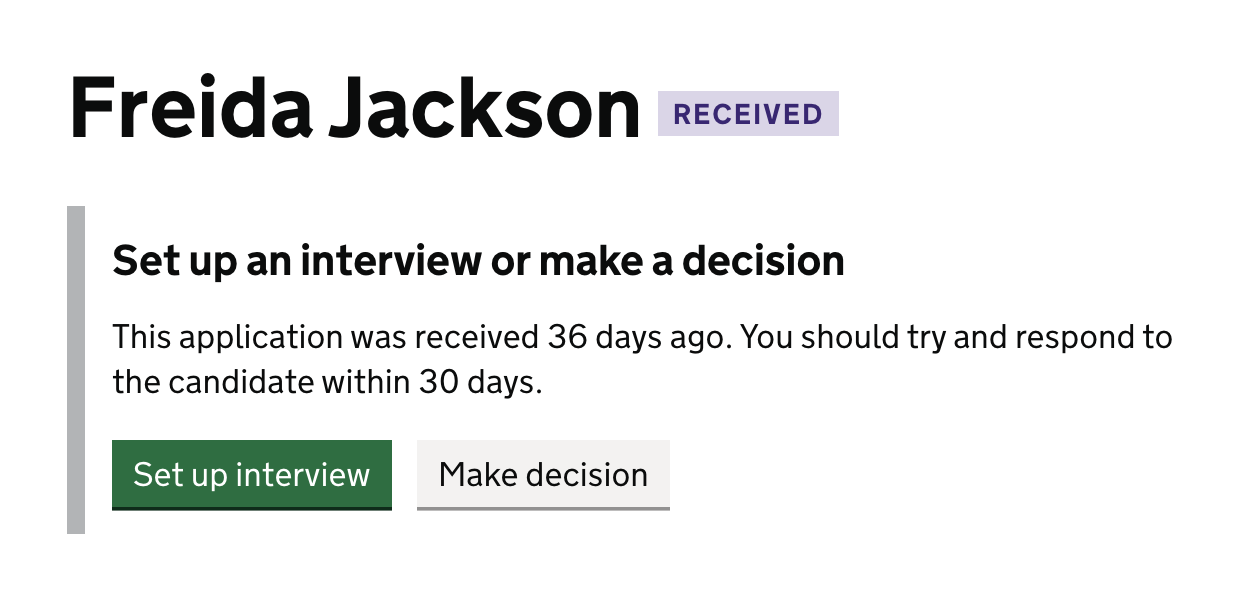
When an offer was made on an application we showed how many days are left before the offer is automatically declined if a candidate does not respond. We also show the date the offer will be automatically declined.

We now show content explaining how long ago the provider had made an offer. We also give an indication that most candidates accept an offer within 15 working days. This was from our analysis in how long it takes candidate to respond to offers. We did this to encourage providers to give candidates some time before they start contacting them to respond to their offer.
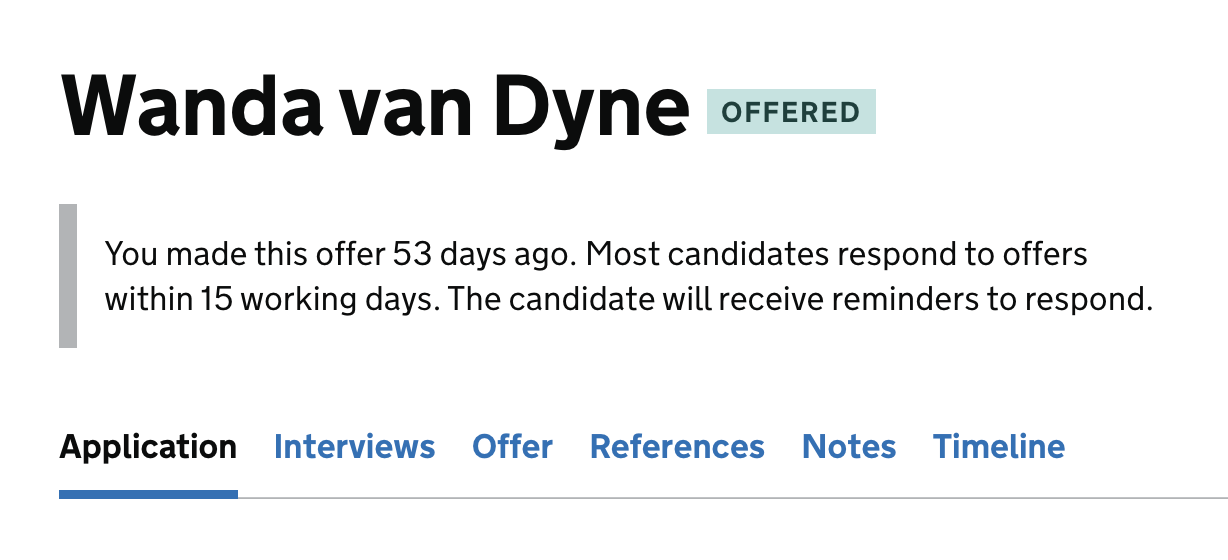
Interview details
When a provider sets up an interview in Manage, we do not allow them to set a date for an interview that would be after the date an application would be rejected by default.
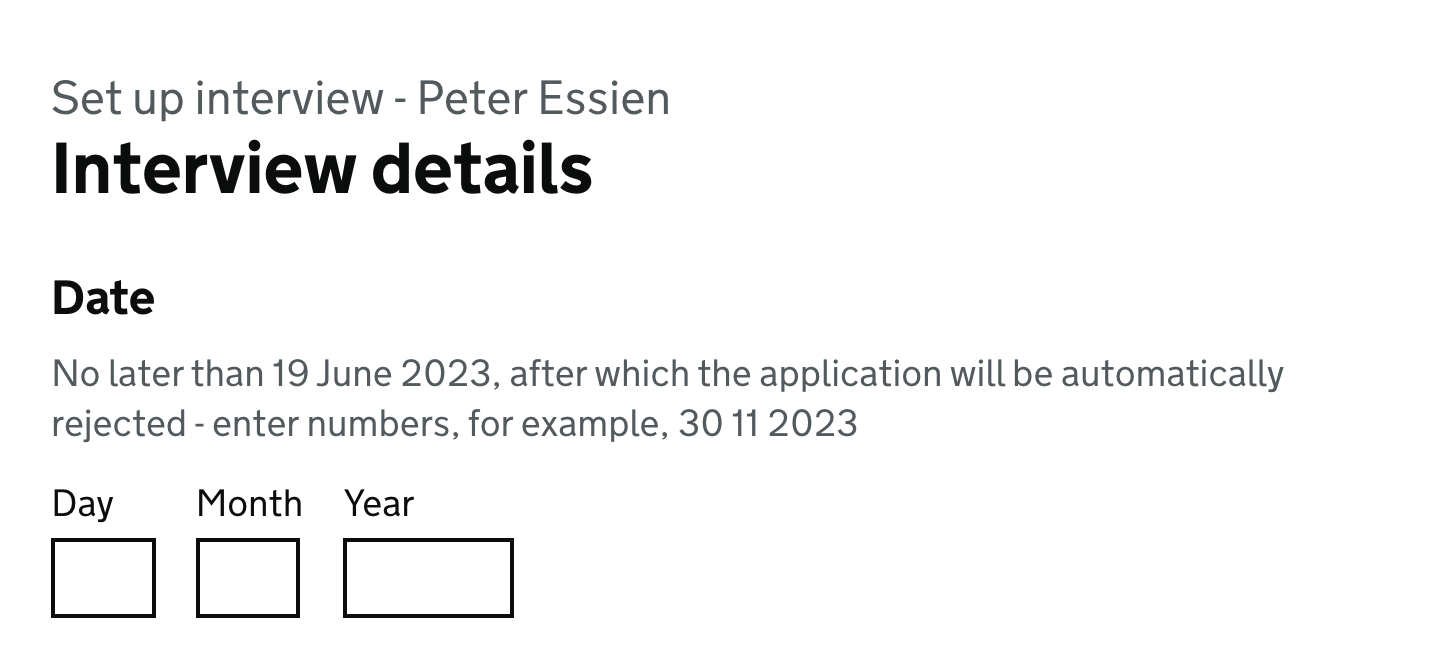
We removed hint text from the interview date question because it’s no longer needed.
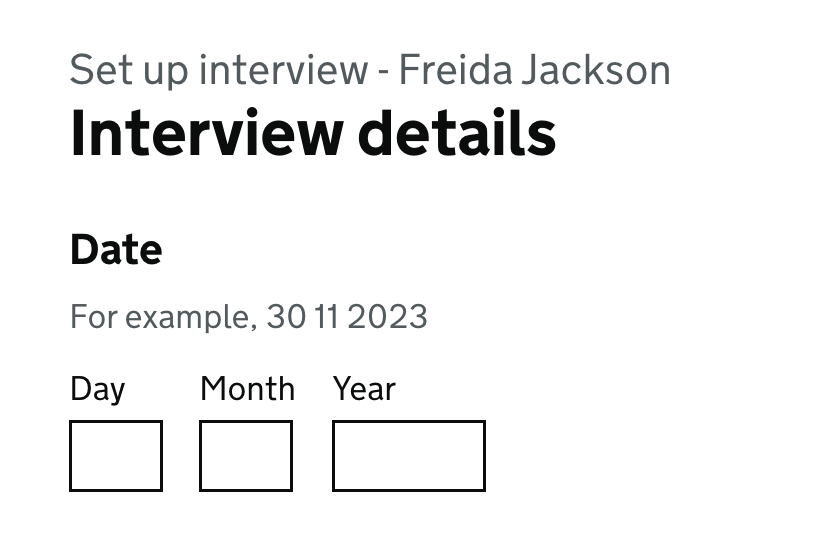
Once a provider has set up an interview, we show how long is left before the application would be rejected automatically.

We replaced this with content to show how long ago the application was received.

Further considerations
We might need to give providers more guidance on what happens if candidates do not respond to offers. We plan to send emails to candidates to encourage them to log in and respond to their offers after a certain number of days.
We’ll need to analyse what happens as there is a risk candidates will hold on to offers which will frustrate providers. But we believe that giving candidates more time is a better solution than having their applications automatically reject.